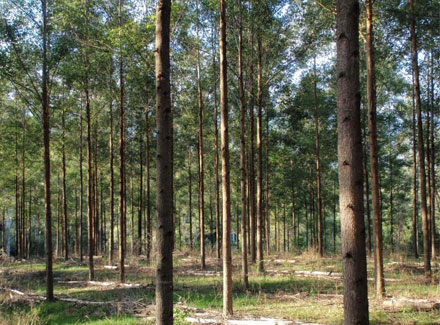
The United Nations General Assembly designated March 21 as the International Day of Forests to celebrate and raise awareness of the importance of all types of forests and of trees outside forests. Source: Bellingen Shire Courier Sun
There are two different perspectives about the state of our forests – the National Parks Association of NSW and Forestry Corporation.
National Parks Association of NSW
High rates of forest clearing in Queensland and Western Australia – with NSW set to follow – means an “all-out assault on Australian forest environments”.
The National Parks Association of NSW (NPA) said it’s easy to become blasé about forests when living on the eastern seaboard of Australia, as we are fringed by forests and our daily life nature front and centre.
“However, this disguises the reality that forests are a rare feature in this vast, arid continent,” NPA senior ecologist, Dr Oisín Sweeney said.
“In fact, native forests only cover 15% of Australia. The vast majority of this is woodland, or scattered trees (10% of Australia), with eucalypt forests – those areas that people typically think of as a forest – only accounting for 3% of our land mass and rainforests just 0.5%.
“Non-eucalypt forests and woodland make up the rest.
“Despite the rarity of forests, they host a disproportionate number of our favourite animals. Gliders, koalas, quolls, phascogales, brush-tailed rock wallabies, powerful owls – they’re all forest species that are only found in Australia. And they’re all threatened because of the rapid loss and degradation of forests.”
Dr Sweeney said this concentration of species is why the forests of East Australia are recognised as one of just 36 global biodiversity hotspots.
“But with this great privilege of living in one of the most special areas on earth comes great responsibility … and so far we’re not taking that responsibility seriously,” he said.
“We have already cleared close to half of our forests in the short time that Europeans have been here, and we’re still clearing faster than any developed country on earth. What hasn’t been cleared has largely been broken up into little bits or heavily degraded – for example through intensive logging.
“We must do better or we’ll find ourselves suddenly regretting the extinction of lots of animals we once took for granted. That would be a national tragedy, because it’s the wildlife that makes Australia unique in the world.”
Dr Sweeney is calling on state and federal governments to come together and make forest conservation and restoration a national priority. In particular, the NPA wants governments to:
Develop a full set of environmental accounts that quantify the value of hidden aspects of forests like water production, carbon storage and wildlife tourism: Without these data we’re making decisions—usually decisions to destroy or degrade forests—based only on partial information.”
Urgently map the growth stages of forests, particularly those subject to logging; “This is vital because the oft-repeated justification for logging is that the trees grow back. That’s just not good enough for the hundreds and hundreds of species that require tree hollows, because only older, large trees have hollows’.
Reign in land clearing, and instead develop a long-term scheme to identify suitable areas for biodiverse reforestation and incentivise landholders undertake this reforestation: “This will also have the added advantage of helping to reverse regional climate change and protect agriculture in the long term.”
NSW Forestry Corporation
NSW Forestry Corporation said more than 100 million trees have regrown in State Forests over the past five years “bringing thousands of timber industry jobs to regional communities and maintaining thriving forest flora and fauna”.
Forestry Corporation of NSW’s CEO Nick Roberts said International Day of Forests, 21 March, celebrated the vital role productive State forests continue to play in local communities.
“There are more than 500 thriving State forests throughout NSW, including over 200,000 hectares of plantations, a million hectares of native production forest that’s been harvested and regenerated many times, and a million hectares set aside for conservation and recreation,” Mr Roberts said.
“Every year we replant a new crop of around 10 million seedlings by hand and we also naturally regenerate millions more trees in native forests.
“While the number of trees growing in State forests is not an exact science, based on data from our planting programs and regeneration surveys we estimate we regrow between 20 and 30 million trees in NSW State forests each and every year.
“We have been working in the same productive forests for more than a century, continuously harvesting and regrowing these forests sustainably so we have an ongoing source of timber to support NSW’s booming timber industry.
“With 100 to 150 million new trees growing over the past five years, these forests will continue to support this vital industry for generations to come.
“Around 22,000 people work in the NSW timber industry and we have the largest number of hardwood sawmills in Australia. Equally importantly, we also carefully manage State Forests to protect their many environmental values and welcome many thousands of campers, bushwalkers, trail bike riders, four wheel drivers, horse riders and mountain bikers each year.
“Because we continue to manage these forests sustainably, they will carry on regenerating and supplying renewable timber 100 years from now and beyond.”





